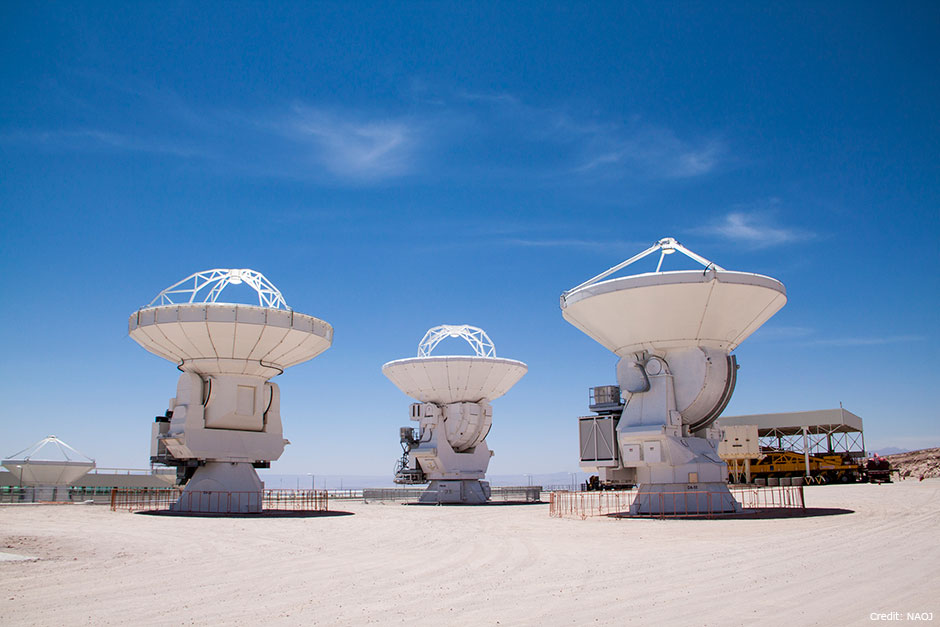“Three Musketeers” Exploring the Universe
Photo・

This is a picture of 12-meter-diameter antennas undergoing performance testing at the ALMA Operations Support Facility (altitude 2900 meters). The 3 antennas lined up here were made in North America, Japan, and Europe (from left to right). Standard performance specifications (surface accuracy, drive and celestial object tracking capability) are applied to all of the ALMA antennas. But the researchers and engineers in each country pursued their own ideas about the best structures and materials to achieve these capabilities, resulting in 3 varieties of 12-m antennas with different appearances being produced.
How to Tell the 3 Antennas Apart
Looking closely at the antennas, you can see that they have many differences. The most outstanding is probably the secondary mirror quadripods stretching up above the parabolic surfaces (main mirrors). On the European antenna (right) the quadripod extends straight, while on the Japanese antenna (center) and North American antenna (left) they have curves. Then there is the difference that, on the Japanese antenna the quadripod projects from the inside of the parabolic surface, but on the North American antenna, the quadripod extends out to the edge of the parabolic surface. Also because the Japanese and European antennas have linear motor drives, circular rails protrude from the backs of their antenna surfaces (the receiver cabins). But the North American antenna is gear driven, so it doesn’t have a rail. There are various differences, like the shapes of the rear sides of the parabolic surfaces, but the parts which the specialized antenna transporters use to carry the antennas and the bases for positioning the antennas on the pads are built using common standards.
Text by: Masaaki Hiramatsu (NAOJ)
Translation by: Ramsey Lundock (NAOJ)
Image Data
| Date | December 7, 2012 |
|---|---|
| Camera | Canon EOS Kiss X3 |
| Exposure | F11, 1/400 second, ISO100 |
| Location | ALMA Operations Support Facility |
| Photographer | Masaaki Hiramatsu (NAOJ) |
| Credit | National Astronomical Observatory of Japan |
Download
- Medium resolution (940 x 627, 89KB)
- High resolution (2000 x 1333, 1.5MB)
- Maximum resolution (4752 x 3168, 7.9MB)